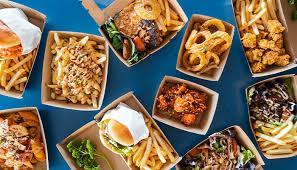
We have all experienced the phenomenon of ordering too much food and realising that our eyes may be bigger than our stomachs. Whilst one may assume that, once their meal is paid for, they own their meal and are able to act accordingly, deciding what happens with the leftovers, some Australian restaurants are opting for a ‘no-takeaway policy’.
The aim of enforcing a ‘no doggy-bag’ rule is generally to ensure that consumers cannot fall ill to food that has been taken outside of a restaurant’s premises, where a restaurant is unable to control the environment in which the meal is stored. This is because food substances which have been left in bacteria-infested environments known as ‘Danger Zones’, such as a hot car, may lead to food poisoning, as warned by Department of Health. It is this risk that makes restaurants potentially liable.
One man from Sydney, Ian Hogan, described his experience at Crowne Plaza in the Hunter Valley who refused takeaway of his young daughter’s meal, despite paying for the meal and the facilities associated with the Hotel. Standard 3.2.2 of the Food Safety Practices and General Requirements does not express a legislative requirement for restaurants to provide or refuse takeaway, and so the ability to refuse takeaway is within the discretion of each individual restaurant.
Other establishments, such as the Shangri-La Hotel in Sydney, are meeting patrons half-way, requesting the customers signature on waivers and indemnity forms to ensure no liability on behalf of the restaurant once their food has left the premises. Accordingly, once the food is taken off the food business premises, each customer is responsible for its safe storage and handling.
This new practice has been refuted by many restaurants, namely Hana Assafiri, the founder of Fitzroy restaurant Moroccan Soup Bar, who has stated “I always encourage people to take leftovers home if they want to. It's ridiculous that restaurants should have to fear litigation”. Instead, these restaurant owners are using techniques to mitigate the risks of bacteria breeding, like Scott Brown of Grana, Sydney, who is educating his customers about the dangers of the Danger Zone, being between 5°C and 60°C.
The Department of Health also encourages the use of sticky labels on food hygiene, which provide care-instructions for customers, telling diners to cool the food quickly, reheat until steaming and to dispose of after 24 hours.
In Australia, more than $8 billion-worth of edible food is disposed of on an annual basis, and the increase in reusing takeaway will only accelerate this further. Let us know what you think, is the no takeaway policy a step towards greater care of food practices, or is this contributing to a much larger issue?
If you wish to discuss this matter further, please do not hesitate to contact our offices on (02) 8917 8700.
